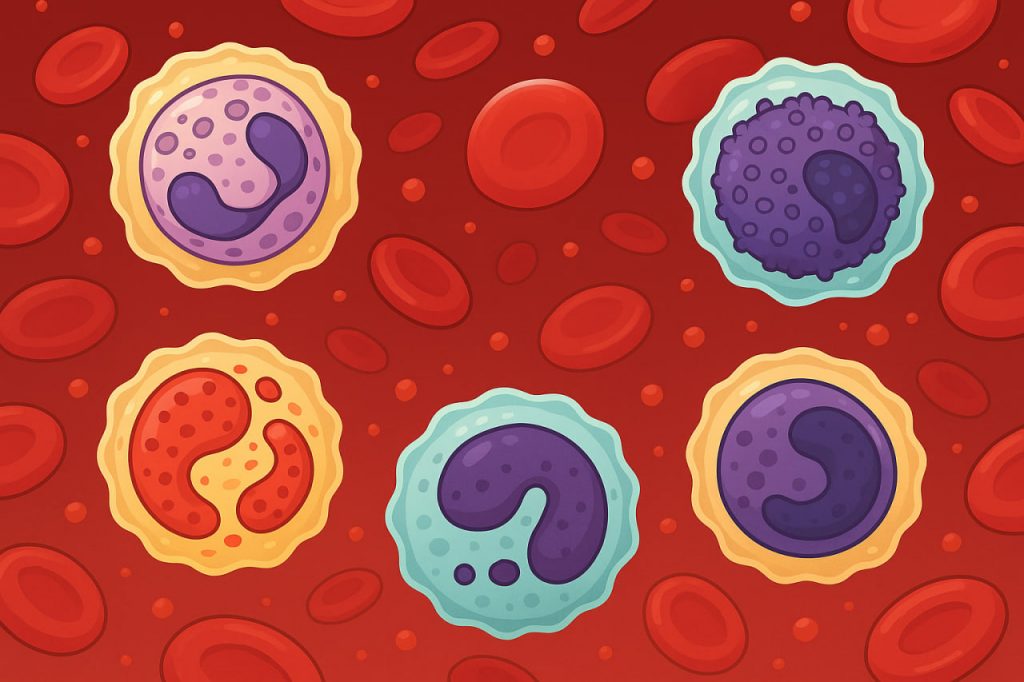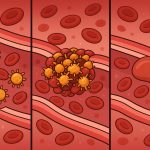Leukocytes, also known as white blood cells (WBCs), are a crucial part of the human immune system. Unlike red blood cells, which carry oxygen, leukocytes defend the body against infections, foreign substances, and abnormal cells. They circulate in the blood and tissues, constantly monitoring for threats and reacting quickly when danger is detected.
Types of Leukocytes
Leukocytes are divided into several groups, each with specialized roles:
- Neutrophils
- The most numerous leukocytes (about 50–70% of all WBCs).
- First responders to bacterial infections.
- Destroy microbes by engulfing them (phagocytosis).
- Lymphocytes
- Include B cells, T cells, and natural killer (NK) cells.
- B cells produce antibodies.
- T cells kill infected cells and regulate immune responses.
- NK cells destroy virus-infected and cancer cells.
- Monocytes
- Develop into macrophages in tissues.
- Clean up dead cells and pathogens.
- Important for long-term immunity.
- Eosinophils
- Defend against parasites.
- Involved in allergic reactions and asthma.
- Basophils
- Release histamine and other chemicals during allergic reactions.
- Help start inflammatory responses.
Normal Levels
- Leukocytes normally make up 4,000–11,000 cells per microliter of blood.
- Levels rise during infection (leukocytosis) and fall with certain diseases or immune deficiencies (leukopenia).
Functions of Leukocytes
- Defense against pathogens – bacteria, viruses, fungi, and parasites.
- Detection of abnormal cells – such as cancerous or damaged cells.
- Regulation of immunity – balancing defense while avoiding overreaction.
- Inflammation – leukocytes trigger redness, heat, and swelling to fight infection.
- Memory – lymphocytes remember past infections, enabling faster future responses.
When Leukocytes Malfunction
- Too few (leukopenia) – weakens immunity, increasing infection risk.
- Too many (leukocytosis) – may indicate infection, inflammation, or leukemia.
- Abnormal function – autoimmune diseases, where leukocytes attack the body’s own cells.
Conclusion
Leukocytes are the body’s frontline soldiers, working together to protect against infections, regulate immunity, and maintain health. Each type has a unique role, but together they form a powerful defense system. Monitoring leukocyte levels is an essential part of medical diagnostics, as they provide vital clues about the state of the immune system.
Glossary
- Phagocytosis – the process of engulfing and destroying microbes.
- Antibodies – proteins that recognize and neutralize pathogens.
- Histamine – a compound that triggers allergic and inflammatory responses.
- Leukocytosis – increased number of white blood cells.
- Leukopenia – decreased number of white blood cells.


